Stephen Hong Sohn's Blog, page 12
April 29, 2023
A Review of Nidhi Chanani’s Jukebox (First Second, 2021)
![[personal profile]](https://i.gr-assets.com/images/S/compressed.photo.goodreads.com/hostedimages/1491408111i/22407843.png) uttararangarajan
uttararangarajan
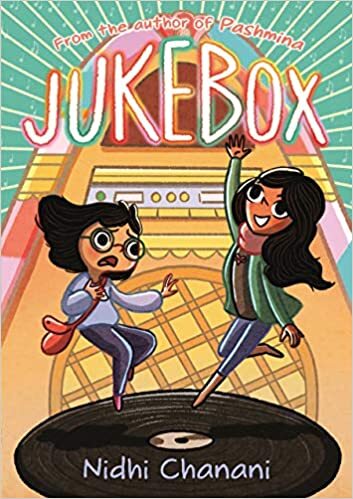
Written by Stephen Hong Sohn
Edited by Uttara Rangarajan
I always teach Nidhi Chanani’s Pashmina in my course on graphic narrative, but I haven’t gotten around to reviewing Chanani’s graphic novel Jukebox (First Second, 2021), so I am here to recify this issue. Let’s go to the marketing description to get us situated, as per usual: “Grab some coins for the jukebox, and get ready for a colorful, time-traveling, musical tale about family and courage. A mysterious jukebox, old vinyl records, and cryptic notes on music history, are Shaheen's only clues to her father's abrupt disappearance. She looks to her cousin, Tannaz, who seems just as perplexed, before they both turn to the jukebox which starts…glowing? Suddenly, the girls are pulled from their era and transported to another time! Keyed to the music on the record, the jukebox sends them through decade after decade of music history, from political marches, to landmark concerts. But can they find Shaheen’s dad before the music stops? This time-bending magical mystery tour invites readers to take the ride of their lives for a coming-of-age adventure.”
This story is actually a little bit scary in terms of its premise because Shaheen’s dad is gone, and they’re not sure where he is. When they go to the record shop that he often frequents, they come upon a magical jukebox, which takes them to the time and place related to the record that is playing. With references to civil rights, Bessie Smith, James Brown, and time travel, you can’t really beat this particular adventure type graphic novel. There are some obvious resonances between this work and Pashmina, as both titles reference magical objects who are able to transport the individual who is in proximity to it in some way. Whereas Pashmina focuses very much on a South Asian American family and transnational dynamics, Jukebox is more interested in an intersectional perspective, bringing together Asian American, African American, white, and queer perspectives into a single narrative. A lovely author’s note at the work’s conclusion also clarifies the autobiographical stakes for this work. Finally, Chanani’s signature buoying visuals really bring this story to life. Another winner from Chanani.
Buy the Book Here
 comments
comments
A Review of Gabrielle Zevin’s Tomorrow, and Tomorrow, and Tomorrow (Knopf, 2022)
![[personal profile]](https://i.gr-assets.com/images/S/compressed.photo.goodreads.com/hostedimages/1491408111i/22407843.png) uttararangarajan
uttararangarajan
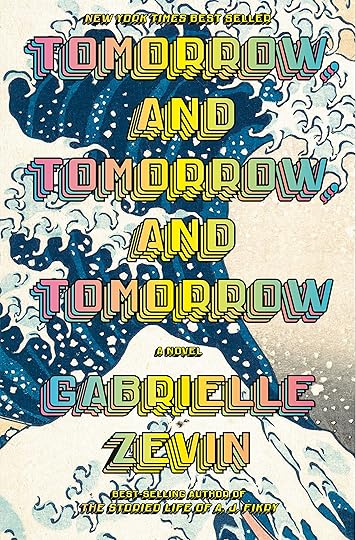
Written by Stephen Hong Sohn
Edited by Uttara Rangarajan
Readers of our review will know I’m a huge fan of Gabrielle Zevin. I’ve read close to everything Zevin has published, so you know I was eventually going to get to Tomorrow, and Tomorrow, and Tomorrow (Knopf, 2022). This book has been getting a huge buzz. I’ve just heard people talking about it, heard about people reading it, and heard people raving about it. I can see why though, the signature aspects of Zevin’s writing are all there, especially her masterful deployment of sentimentalism. The marketing description gives us this information: “On a bitter-cold day, in the December of his junior year at Harvard, Sam Masur exits a subway car and sees, amid the hordes of people waiting on the platform, Sadie Green. He calls her name. For a moment, she pretends she hasn’t heard him, but then, she turns, and a game begins: a legendary collaboration that will launch them to stardom. These friends, intimates since childhood, borrow money, beg favors, and, before even graduating college, they have created their first blockbuster, Ichigo. Overnight, the world is theirs. Not even twenty-five years old, Sam and Sadie are brilliant, successful, and rich, but these qualities won’t protect them from their own creative ambitions or the betrayals of their hearts.”
These descriptions are always interesting because they tend to have to condense the plot and reduce the complexity of the character-system. In this case, the novel really has at least two other major characters. The first is Marx, Sam’s college roommate, who will eventually engage in a romance with Sadie, which will complicate the working relationships amongst all three characters. The other major character is Dov, the college professor, who Sadie has an affair with, and who ultimately helps push Sadie into her gaming development career.
What I adored about this text is that you know Zevin is a real fan of gaming, and it brought out that nostalgic streak in me. I used to game quite a bit, but as life got busy, I left all PC, handheld, and console gaming behind. I’m not surprised that Zevin ultimately focuses on the MMORPG, which is short for the massively multiplayer online role-playing game. These virtual realities were really formative for me as an escape, and Zevin really offers us a robust engagement with why the MMORPG is such an attractive alternative world. At the core of this novel, we see that the chemistry between Sadie and Sam is unique: it allows them to create games that truly become embraced by consumers. The problem is of course the various personal dynamics that continue to create friction and fissures between them, and thus sometimes get in the way of their gaming creation. The depth of their friendship, which always but never veers into romance, makes this novel particularly compelling.
Buy the Book Here
 comments
comments
A Review of Sangu Mandanna’s A Spark of White Fire (Sky Pony, 2018)
![[personal profile]](https://i.gr-assets.com/images/S/compressed.photo.goodreads.com/hostedimages/1491408111i/22407843.png) uttararangarajan
uttararangarajan
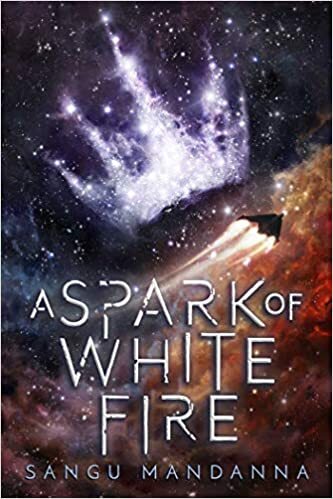
Written by Stephen Hong Sohn
Edited by Uttara Rangarajan
I’ve been meaning to review Sangu Mandanna’s A Spark of White Fire (Sky Pony, 2018) for some time, as I’ve read it quite awhile ago, but haven’t sat down to write it out. In any case, this one is really an action-packed, fun installment loosely based on both Indian epics and Greek mythology. The marketing description can be found here: “In a universe of capricious gods, dark moons, and kingdoms built on the backs of spaceships, a cursed queen sends her infant daughter away, a jealous uncle steals the throne of Kali from his nephew, and an exiled prince vows to take his crown back. Raised alone and far away from her home on Kali, Esmae longs to return to her family. When the King of Wychstar offers to gift the unbeatable, sentient warship Titania to a warrior that can win his competition, she sees her way home: she’ll enter the competition, reveal her true identity to the world, and help her famous brother win back the crown of Kali. It’s a great plan. Until it falls apart. Inspired by the Mahabharata and other ancient Indian stories, A Spark of White Fire is a lush, sweeping space opera about family, curses, and the endless battle between jealousy and love.”
What is really unique about this version of revising myths and epics is that that it’s primarily constituted through a kind of science fiction environment. Indeed, the sentient warship is one of the most intriguing elements of this plot. Of course, there’s much political intrigue in this narrative, as Esmae’s return pushes her to consider where her loyalties might lie. With a ton of action sequences and the complications of political gamesmanship, Mandanna’s first installment is well worth a read, especially for YA fans.
Buy the Book Here
 comments
comments
April 28, 2023
A Review of Calvin D Sun’s Monsoon Diaries (Harper Horizon, 2022)
![[personal profile]](https://i.gr-assets.com/images/S/compressed.photo.goodreads.com/hostedimages/1491408111i/22407843.png) uttararangarajan
uttararangarajan
[image error]
Written by Stephen Hong Sohn
Edited by Uttara Rangarajan
One of the first books to squarely address the COVID-19 pandemic from the perspective of an Asian American physician, Calvin D Sun’s Monsoon Diaries: A Doctor’s Journey of Hope and Healing from the ER Frontlines to the Far Reaches of the World (Harper Horizon, 2022) presents us with a complicated and chilling account of the darkest days of the early pandemic. Let’s let the official marketing description do some work for us as per usual: “The Monsoon Diaries is the firsthand account of Dr. Calvin Sun, an emergency room doctor who worked tirelessly on the front lines in multiple hospitals during the COVID-19 pandemic. Drawing upon the lessons he learned from his adventures traveling to more than 190 countries in ten years, as well as from the grief he experienced as a teen when his father died, Dr. Sun shares his journey, from growing up as a young Asian American in New York to his calling first to medical school and then to the open road. He believes that the fight for a better world creates meaning when all feels meaningless, and he hopes that telling his story will help readers reframe this tragic moment in our lifetimes into possibility, with the goal of building a more empathetic society.”
What is clear about from Sun’s account is how unprepared the hospital system was (and likely still is) for a pandemic of this magnitude. Indeed, Sun has to rely on the help of others outside of hospital infrastructure to receive the PPE he needs to keep himself and his patients safe. It is here where the memoir reveals the crucial importance of mutual aid that constitutes care work communities, especially in light of the fact that the government and the hospital administration could not provide the support it needed for essential workers like doctors and nurses to complete their jobs. The ways in which interdependence emerges in relation to survival is clearly apparent. At one point in the pandemic, NYC finally decides to merge all hospitals essentially into a single unit. Sun writes: “Through the four weeks of ER-hopping, working almost as many different systems as hospitals, I think it’s crystal clear we’re all on the same team . . . So glad someone up there also finally gets it! Get rid of the medical red tape and bloated bureaucracy tying our hospital system in knots, . . . Why couldn’t they have done this earlier?” (113). Sun later adds, “At the same time, I can also see how just one or two bad apples, whether political or medical, could screw it up for all of us and bring the whole effort down. We’re all depending on each other, out of nothing but necessity. It’s beautiful, and also terrifying” (113). The decision to change the governance structures of NYC hospitals, though, occurs on April 5, 2020, well into lockdown and after numerous lives have already been lost. Sun makes clear that the hospitals must work together to effectively combat the virus. As the virus’s lethality begins to wane, Sun gets a much-deserved reprieve, yet the constructive critiques he continually offers in the wake of this pandemic remind us that we have so much more to do and so much we can improve on in the way that we deal with such widespread health catastrophes. A sobering and important contribution to the literature that will no doubt be arising out of the pandemic.
Buy the Book Here
 comments
comments
A Review of Deb JJ Lee’s In Limbo (First Second, 2023)
![[personal profile]](https://i.gr-assets.com/images/S/compressed.photo.goodreads.com/hostedimages/1491408111i/22407843.png) uttararangarajan
uttararangarajan
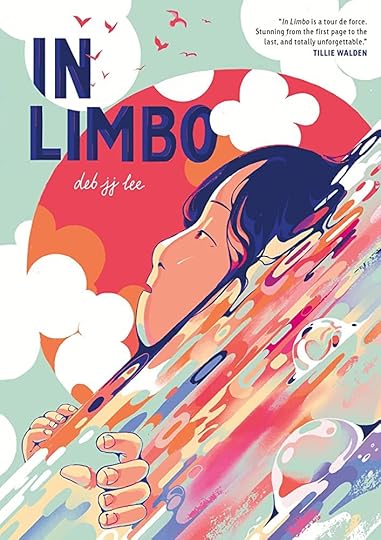
Written by Stephen Hong Sohn
Edited by Uttara Rangarajan
Well, if you didn’t realize it by now, First Second is probably one of the best imprints publishing Asian American graphic narratives. They’ve published dozens of titles over the years, and many of them are absolutely stellar. Here, I am covering Deb JJ Lee’s In Limbo (First Second, 2023), an incredible story of mental illness that complicates a close friendship: “Ever since Deborah (Jung-Jin) Lee emigrated from South Korea to the United States, she's felt her otherness. For a while, her English wasn’t perfect. Her teachers can’t pronounce her Korean name. Her face and her eyes—especially her eyes—feel wrong. In high school, everything gets harder. Friendships change and end, she falls behind in classes, and fights with her mom escalate. Caught in limbo, with nowhere safe to go, Deb finds her mental health plummeting, resulting in a suicide attempt. But Deb is resilient and slowly heals with the help of art and self-care, guiding her to a deeper understanding of her heritage and herself” (Barnes and Noble marketing description).”
The book description doesn’t fully explore the challenging relationship that Deb has with her mother, who assumes that Deb will continue to excel at violin playing. While Deb is somewhat of a solitary figure, she does find some solace in the social circle she initially established in string orchestra, but by the time Deb enrolls in high school, she is beginning to lose her passion for violin playing. She also generally struggles in school, which leads to significant tension with her mother. Eventually, her mother allows Deb to enroll in a local art school on the weekends, realizing that Deb must find some positive outlet, but the strain between them continues to generate more stress on Deb. Deb begins to make some close new friends in high school, but as Deb’s mental illness begins to develop, she cannot fully navigate the intimacy that she is forming. The graphic narrative is a particularly astute look at mental illness, and the care with which Lee presents this friendship is especially impressive. An exceptional graphic narrative with beautiful art.
Buy the Book Here
 comments
comments
A Review of Bushra Rehman’s Roses, in the Mouth of a Lion (Flatiron, 2022)
![[personal profile]](https://i.gr-assets.com/images/S/compressed.photo.goodreads.com/hostedimages/1491408111i/22407843.png) uttararangarajan
uttararangarajan
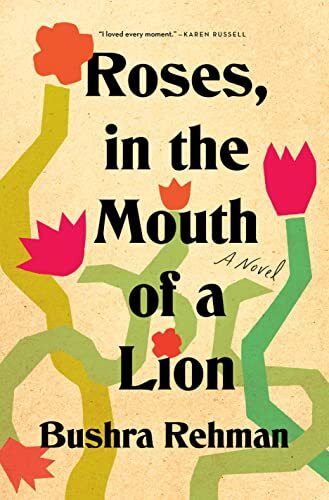
Written by Stephen Hong Sohn
Edited by Uttara Rangarajan
So, I absolutely adored Bushra Rehman’s Roses, in the Mouth of a Lion (Flatiron, 2022). Though this novel is more of a traditional bildungsroman, it is told in a series of poetic vignettes, much in the vein of the best in this kind of genre. I’ll let the official marketing description do some work for us: “Razia Mirza grows up amid the wild grape vines and backyard sunflowers of Corona, Queens, with her best friend, Saima, by her side. When a family rift drives the girls apart, Razia’s heart is broken. She finds solace in Taslima, a new girl in her close-knit Pakistani-American community. They embark on a series of small rebellions: listening to scandalous music, wearing miniskirts, and cutting school to explore the city. When Razia is accepted to Stuyvesant, a prestigious high school in Manhattan, the gulf between the person she is and the daughter her parents want her to be, widens. At Stuyvesant, Razia meets Angela and is attracted to her in a way that blossoms into a new understanding. When their relationship is discovered by an Aunty in the community, Razia must choose between her family and her own future. Punctuated by both joy and loss, full of ’80s music and beloved novels, Roses, in the Mouth of a Lion is a new classic: a fiercely compassionate coming-of-age story of a girl struggling to reconcile her heritage and faith with her desire to be true to herself.”
While the description provides us a relatively linear description of Razia’s movement through childhood into high school, the novel is far more meandering—and I mean this word as a compliment—as we see Razia grow up in Queens. Now that I live in NYC, this novel means something far more different to me. I’m not very well versed in the trains nor the area of Queens, but there is something very specific to living in NYC. Indeed, the crush of people, the frenetic energy, and the use of the subway bring us to some of the commonalities of NYC life. At the same time, Razia’s upbringing is very particular: the community that exists in the Pakistani diaspora and the desire to retain particular cultural mores. Razia must navigate both her burgeoning queer desires and the legibility she seeks to retain as a Pakistani American daughter. The novel thus has much in line both thematically and formally with Le Thi Diem Thuy’s The Gangster we are All Looking For and Justin Torres’s We the Animals. On the one hand, the novel spotlights the challenging ways in which Razia confronts these newfound feelings. On the other, Rehman chooses to provide us with these very detailed and lush vignettes: Razia going with Angela to a museum, for instance, was a stunning sequence, with their unbridled youth on full display. Finally, just by way of a short conclusion, this novel is the first one I can think of that directly displays queer Pakistani American female characters. I can certainly see this novel being taught alongside work like Nina Revoyr’s Necessary Toughness and K-Ming Chang’s Bestiary. A brilliant work, much needed, and beautiful in its rendering!
Buy the Book Here
 comments
comments
A Review of C.E. Shue’s Bridge of Knots (Gold Line Press, 2023)
![[personal profile]](https://i.gr-assets.com/images/S/compressed.photo.goodreads.com/hostedimages/1491408111i/22407843.png) uttararangarajan
uttararangarajan

Written by Stephen Hong Sohn
Edited by Uttara Rangarajan
Well, there’s always these knew independent and small presses emerging, and one of the most intriguing ones is Gold Line Press, based out of my alma mater, the University of Southern California (USC). Here, I am reviewing C.E. Shue’s Bridge of Knots, which came to my attention because it won a competition judged by Matthew Salesses, whose prose I have always admired. Salesses has also written shorter prose fiction closer to the novella and novelette form, which is paralleled on Shue’s Bridge of Knots. Shue’s work really reads as a hybrid in that there is a strong poetic quality to the writing. It’s not told in a strictly linear fashion and what we get are tightly woven-vignettes that follow a character through various meandering journeys, events, and musings. The description that Salesses provides is pretty spot on: “BRIDGE OF KNOTS is a pandemic story that is not about the pandemic. It is a book of character-revealing sentences, of displacement, of humor. It is a book about what it is like to live in the world today, both in a communal sense and in an individual sense--in other words, what is it like to live in this body, in this family, in these circumstances? Through reading this story, I came to understand myself better. What more can a reader ask for?”
One grounding mechanism for the book is certainly the pandemic, but much of the work eschews major timeline markers, even though we know the book is set in San Francisco. The chapters are numbered and are typically very short. Throughout we do get a vague sense of familial complications: raising children, being a writer, confronting life as an adoptee, and of course, the pandemic. The more impressionistic nature of this work seems very apt given the fact that it seems to register the warping of time that occurred as many of us found ourselves navigating a new normal during COVID lockdown. All in all, Chue’s assured, lyrical prose makes us want a fuller-length work, so we’ll wait to see what she has cooking for us. In the meantime, do check out Gold Line Press (link below).
Buy the Book Here
 comments
comments
A Review of Malaka Gharib’s It Won’t Always be Like This (Ten Speed Press, 2022)
![[personal profile]](https://i.gr-assets.com/images/S/compressed.photo.goodreads.com/hostedimages/1491408111i/22407843.png) uttararangarajan
uttararangarajan
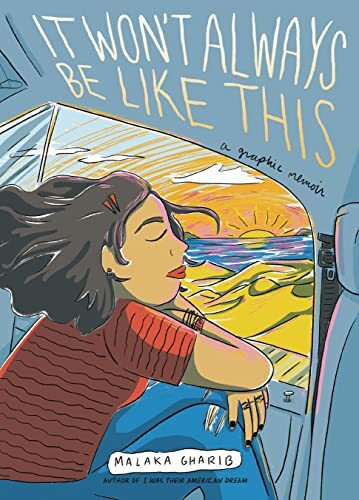
Written by Stephen Hong Sohn
Edited by Uttara Rangarajan
So, I always teach Malaka Gharib’s first graphic narrative, I Was Their American Dream, so I was super excited to hear that Gharib had another publication come out. I have to admit, when I saw it was another memoir, I was thinking: well, what other material could there be, only because the first covered so much ground! Let me tell you: there’s a ton of other material to work with! The marketing description provides us this key information: “It’s hard enough to figure out boys, beauty, and being cool when you’re young, but even harder when you’re in a country where you don’t understand the language, culture, or social norms. Nine-year-old Malaka Gharib arrives in Egypt for her annual summer vacation abroad and assumes it'll be just like every other vacation she's spent at her dad's place in Cairo. But her father shares news that changes everything: He has remarried. Over the next fifteen years, as she visits her father's growing family summer after summer, Malaka must reevaluate her place in his life. All that on top of maintaining her coolness! Malaka doesn't feel like she fits in when she visits her dad--she sticks out in Egypt and doesn't look anything like her fair-haired half siblings. But she adapts. She learns that Nirvana isn't as cool as Nancy Ajram, that there's nothing better than a Fanta and a melon-mint hookah, and that her new stepmother, Hala, isn't so different from Malaka herself.”
So, if you’ve read the first memoir,—and I will provide some spoiler warning here, so look away if you don’t want to find out too much about it—then you already know a little bit of Malaka’s backstory and how she has spent summers in Egypt, but the first graphic memoir only details a handful of the information related to these trips. All we know is that Malaka’s parents get divorced, and she must spend the occasional summer in Egypt. Well, what little we do actually know as readers! The second memoir fills in major gaps. The first memoir doesn’t detail how Malaka’s father had not only gotten remarried but also had another family and that Malaka had half-siblings (or I can’t recall that there was much detail in the first about this familial dynamic). At first, Malaka finds it challenging to figure out where she stands in this family, but over time, she finds a way to feel at home there. Eventually, Malaka’s father, his wife, and children move to Dubai, so there is a geographical and cultural shift in their vacations. Malaka comes to enjoy some aspects of this time, which is relayed in the title, “it won’t always be like this.” Indeed, Malaka’s very perceptive awareness of the transitory nature of the good times becomes evident in the final arc of the graphic memoir. But, perhaps more important than a feel good family bonding story, is the fact that Malaka understands the complexities and pressures related to relationships and knows that there is always more going on than meets the eye. If only I had enough time a semester to teach both graphic memoirs, and now it appears, I’ll have to figure out which one I’ll teach in the future =).
Buy the Book Here
 comments
comments
A Review of Harmony Becker’s Himawari House (First Second, 2021)
![[personal profile]](https://i.gr-assets.com/images/S/compressed.photo.goodreads.com/hostedimages/1491408111i/22407843.png) uttararangarajan
uttararangarajan
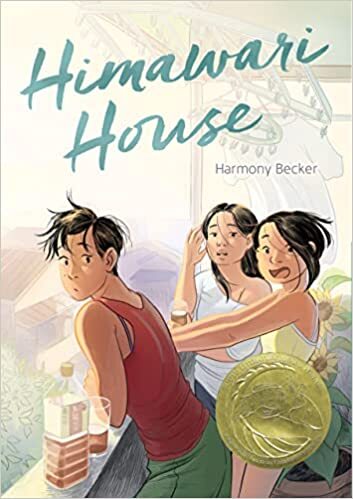
Written by Stephen Hong Sohn
Edited by Uttara Rangarajan
Ah, I read this book quite awhile ago, but I haven’t gotten around to writing up a short but sweet review of this delightful graphic novel, Himawari House, authored by Harmony Becker. Let’s let the marketing description give us our context: “Living in a new country is no walk in the park—Nao, Hyejung, and Tina can all attest to that. The three of them became fast friends through living together in the Himawari House in Tokyo and attending the same Japanese cram school. Nao came to Japan to reconnect with her Japanese heritage, while Hyejung and Tina came to find freedom and their own paths. Though each of them has her own motivations and challenges, they all deal with language barriers, being a fish out of water, self discovery, love, and family.” There is a great little author’s note that accompanies the ending, as Becker explains the importance of accents of all kinds to the multidimensional way that she represents her characters. Hyejung is from Korea, while Tina is from Singapore, so Becker infuses their common language—English, in this case—with a little bit of accents here and there. Becker proclaims the beauty in accents and how she wanted to portray these characters in their full-fledged linguistic glory, and her approach is definitely a winner!
Each character gets their own interesting narrative arcs, but Nao remains the emotional center. Nao, of mixed race background, seeks to travel to Japan in part to learn more about one aspect of her heritage. While at first she definitely feels a little bit out of place, she eventually develops a deep rapport with her housemates at Himawari that makes for the best kind of alternative kinship. Becker has a really interesting art style, one that defies gender normative representations. I was also really engaged by the thoughtful and quite poignant storyline for Hyejung, whose developmental arc is probably the most radical of the three. A truly heartfelt transnationally configured Asian American graphic novel. Another must read!
Buy the Book Here
 comments
comments
A Review of Johanna Hedva’s On Hell (Satyr Press, 2018)
![[personal profile]](https://i.gr-assets.com/images/S/compressed.photo.goodreads.com/hostedimages/1491408111i/22407843.png) uttararangarajan
uttararangarajan

Written by Stephen Hong Sohn
Edited by Uttara Rangarajan
Two Dollar Radio has always been one of my favorite indie presses. You can count on them to publish material you wouldn’t find anywhere else, works that push the boundaries of form and content. Such is the case with Johanna Hedva’s On Hell (2018), which comes out of Satyr Press, an imprint of Two Dollar Radio. You know you’re going to get something unique when the book is the size of a pocket paperback, with pinkish hued pages, and with a conceit of an interview with a character who swears in every single sentence. The official marketing blurb gives us this pithy description: “On Hell transcribes a body broken by American empire, that of ex-con Rafael Luis Estrada Requena, hacking itself away from contemporary society. Johanna Hedva, author of ‘Sick Woman Theory,’ takes the ferocious compulsion to escape (from capitalism, from the limits of the body-machine, from Earth) and channels it into an evisceration of oppression and authority. Equal parts tender and brutal, romantic and furious, On Hell is a novel about myths that trick and resist totalitarianism.”
This novella is formalistically really experimental. The first half is primarily an interview, where we don’t know the questions being told. We do know that Rafael is the interviewee, and Hedva chooses to generate a monologue without commas and with little punctuation, so you can go pages and pages with this very kinetic character railing against consumers, the US government, while detailing his upbringing as a child of undocumented immigrants. The plot also involves an intriguing conceit: Rafael is essentially reconstructing his body, “hacking” as it is called in the text, in order to allow it to fly. We do find out that Rafael had once been incarcerated for hacking into a CIA website. The second half of the novel shifts to the perspective of the journalist who had been interviewing him, a character by the name of—insert laughing emoji here—Motherfuck. The name is apt insofar as this character is one invested precisely in the political project that Rafael is engaged in, so once he disappears, Motherfuck attempts to find him.
While roads seem to lead nowhere, the text itself is less about this plot than about the desire for Rafael to gain a form of agency, if only in the power he has over his body and gravity itself. The novella ends with two very informative interviews, which help position this narrative within the emergent discourses of disability studies and crip time. While I was reading this work, I was certainly thinking of Rafael as a kind of cyborgian supercrip character: he disables his body, while simultaneously enabling it for another purpose. Hedva’s work is super dynamic, with the kind of writing that I think is best read aloud, evoking a poetic quality. Rafael is an unforgettable and unique character, one with no filter and who imagines a future of possibility, despite all that has weighed him down.
By way of a conclusion, I’m providing an extra link to Paige Clark’s U.S. publication of She is Haunted. We, at AALF, earlier review Clark’s work when it originally debuted with the Australian publication (Allen & Unwin), the link is provided here.
Buy Johanna Hedva’s On Hell Here.
Check out the US publication of Paige Clark’s She is Haunted over this-a-way.
 comments
comments



